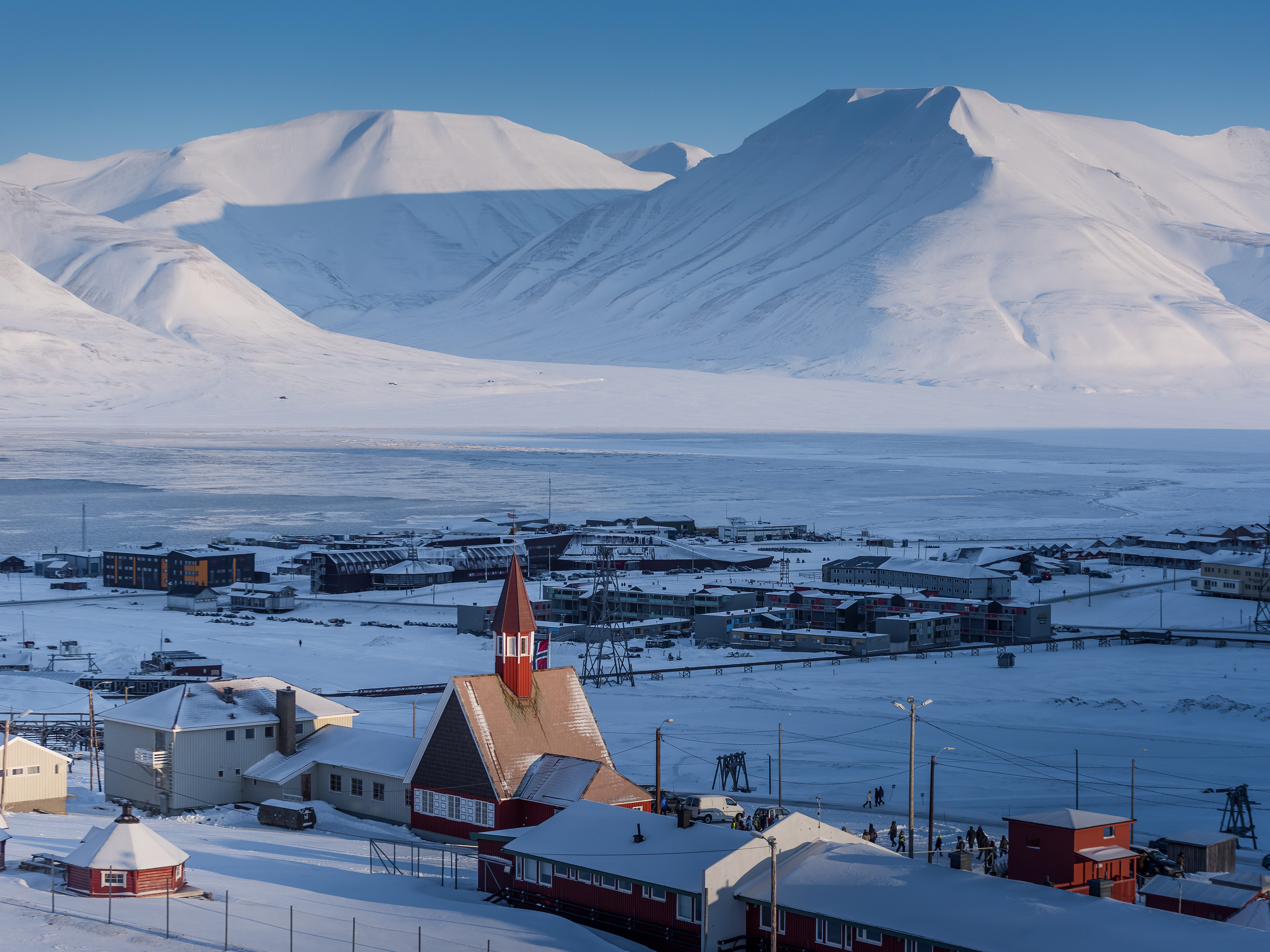
ginger_polina_bublik/Shutterstock
- The world’s northernmost town is Longyearbyen in the Norwegian archipelago of Svalbard.
- The town is 800 miles from the North Pole and one of the most remote human settlements on Earth.
- Longyearbyen has all the amenities of a modern town, including a school, restaurants, and a cinema.
From the driest deserts to remote settlements on volcanic islands, human communities can be found anywhere on Earth.
One such community is Longyearbyen, where 2,400 residents live in the northernmost town in the world, approximately 818 miles from the North Pole.
Located in Svalbard, a Norwegian archipelago between mainland Norway and the North Pole, the town has regular modern amenities like schools, restaurants, and stores.
However, it’s unlike anywhere else on Earth.
For starters, it’s dark four months a year and perpetually light for another four months. Secondly, it’s suggested residents carry a rifle when traveling outside the town borders — in case they run into a polar bear.
Like many of the settlements in this part of the world, Longyearbyen was established as a mining town, though mining operations have since been phased out of the area.
Now, the town is a place of scientific research and adventure tourism — it welcomes tens of thousands of visitors each year.
The town is also the home of the famous doomsday seed vault, which houses seeds for every known crop on the planet, and yet Longyearbyen is so cold, it is unable to grow any trees of its own.
See what life is like for the people who live in this town.
Welcome to Longyearbyen, the northernmost town in the world.
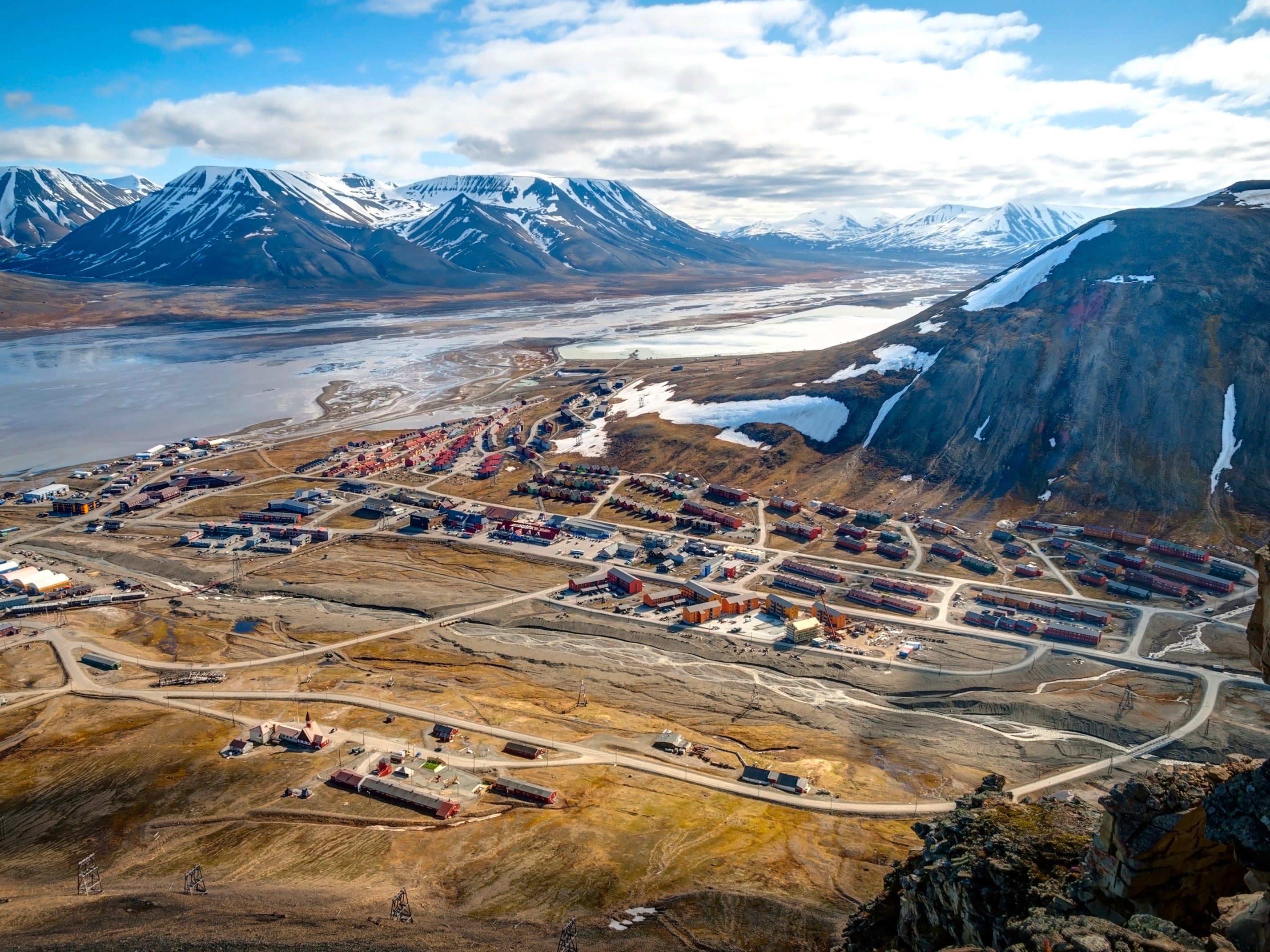
Ana Flasker/Shutterstock
Longyearbyen is located in the Norwegian archipelago of Svalbard, which is a three-hour flight from Oslo and about 650 miles from the North Pole.
The town is the largest settlement in its vicinity.
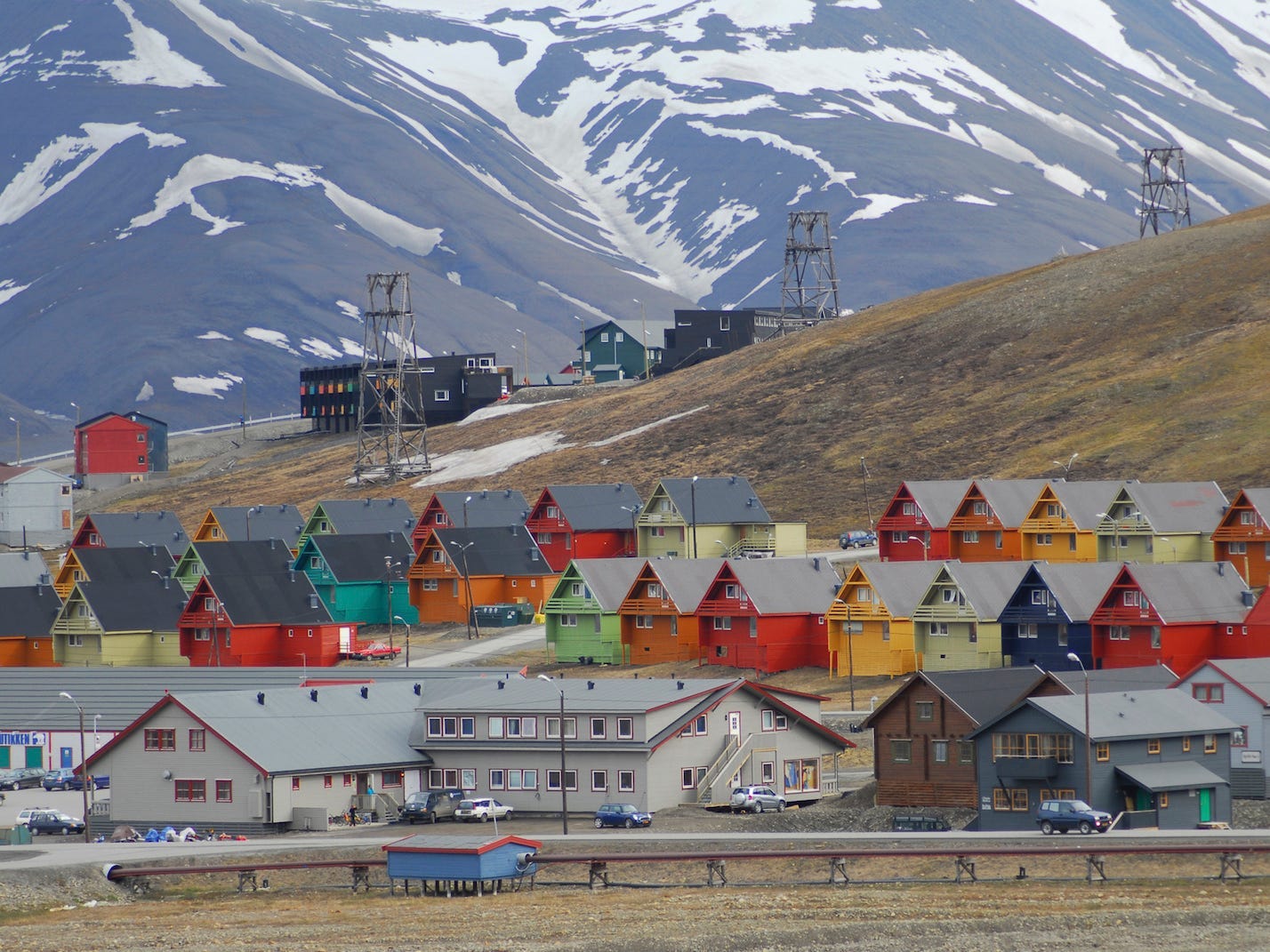
REUTERS / Peter Vermeij / Global Crop Diversity Trust / Handout
While there are a couple of tiny settlements further in the north, Longyearbyen is the first of any significant size.
The town has a population of around 2,400 residents, per Visit Svalbard.
Svalbard was founded as a hunting and fishing base.
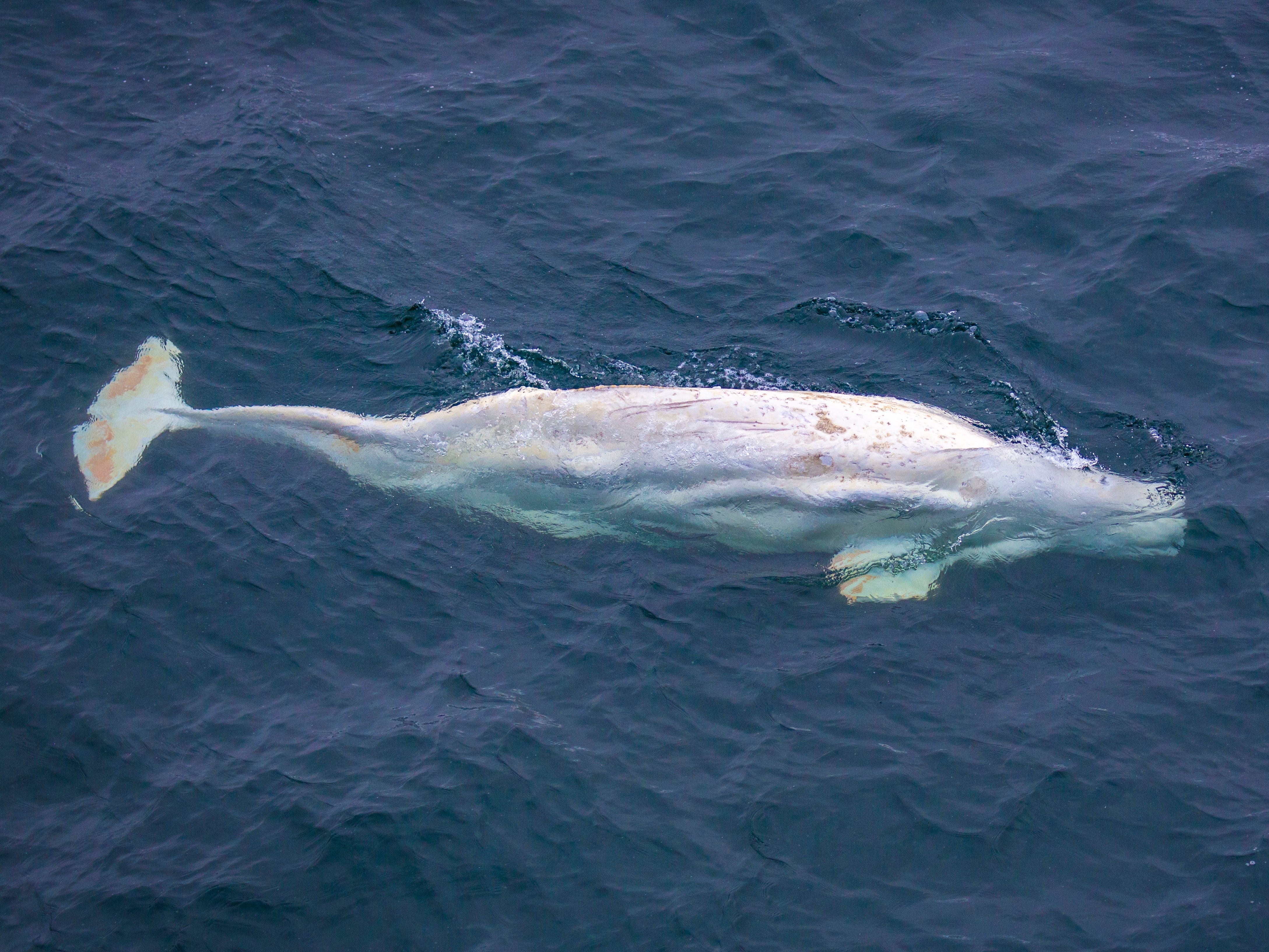
Johannes Rigg/Shutterstock
After its discovery by Dutch explorer Willem Barents in 1596, Svalbard became a base from which to hunt and fish the large fauna that inhabited the archipelago.
English, Danish, Dutch, and French companies fought over the hunting grounds, which were rich in walrus and bowhead whales. It’s estimated that the Dutch alone killed 60,000 whales between the 17th and 18th centuries.
Longyearbyen was established as a mining town.
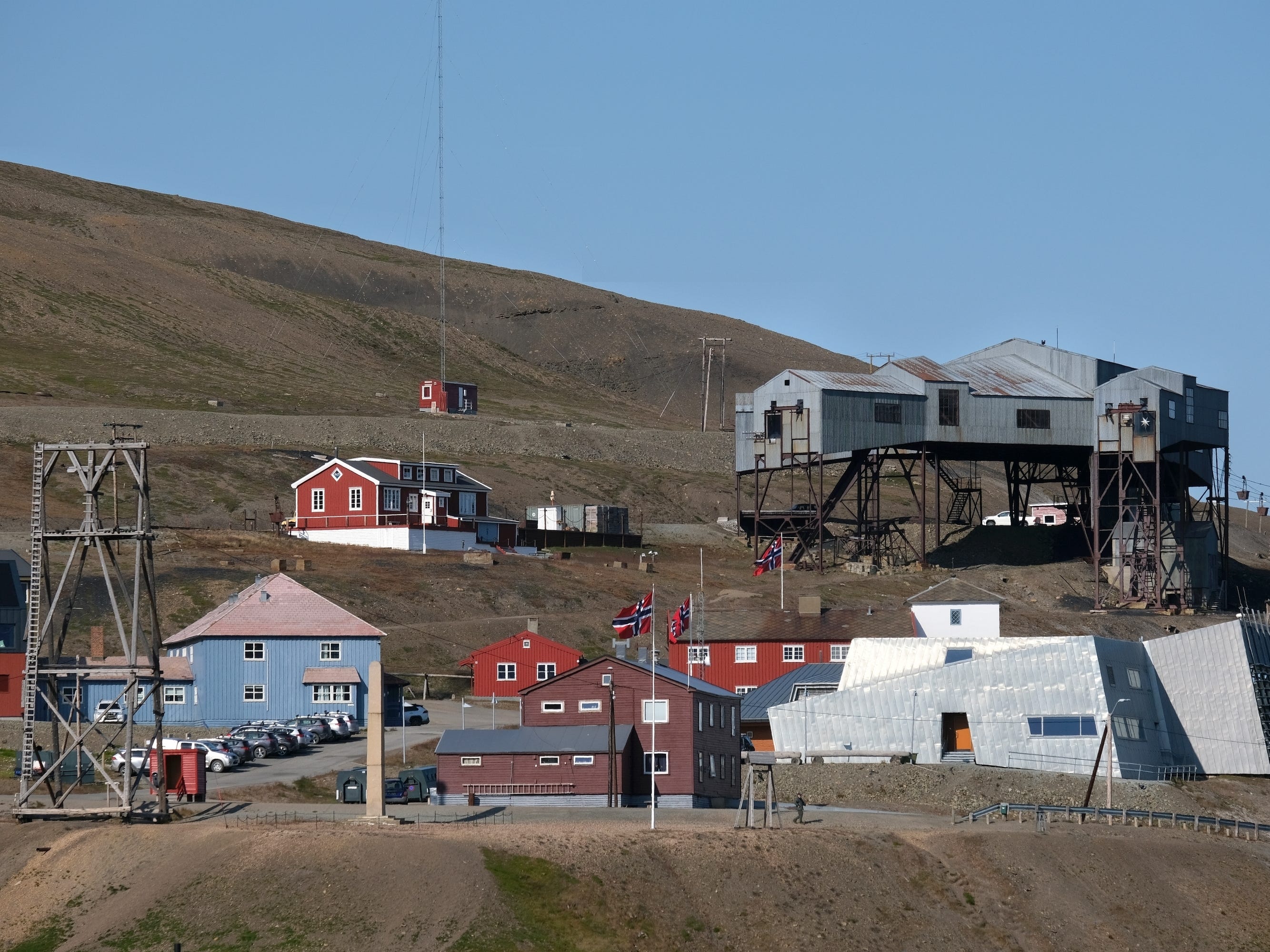
iwciagr/Shutterstock
At the turn of the 20th century, Longyearbyen was established as a coal mining town, though mining operations have since shuttered.
Mining has been phased out of the entire area, with Svalbard’s final mine, the Norwegian-run Mine 7, closing in June 2025.
Today, the town attracts tourism and scientific research.
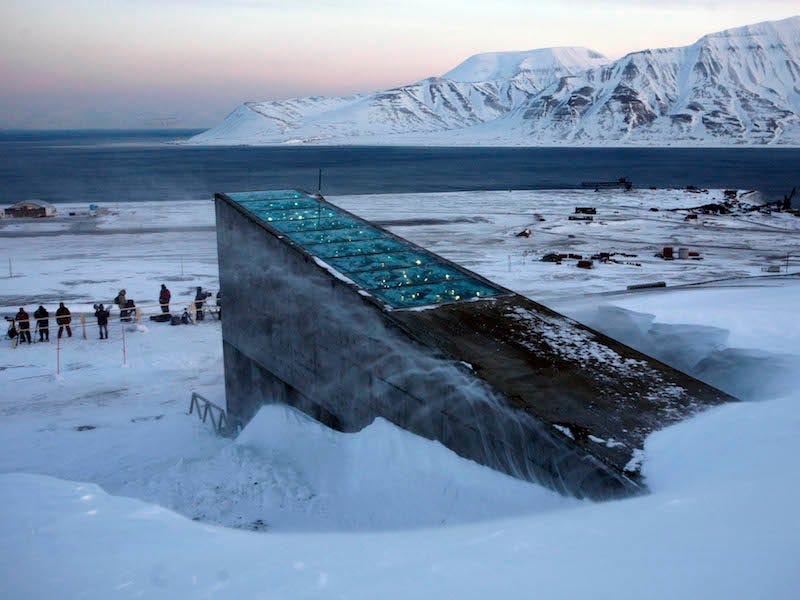
AP Photo/John McConnico
As mining phased out, Longyearbyen has become a destination for adventurous tourists and scientific researchers. More than 150,000 people visited Svalbard as a whole in 2018, per the most recent data available.
It is the host of the doomsday seed vault, which stores every known crop on the planet.
The doomsday seed vault is home to over a million different seeds.
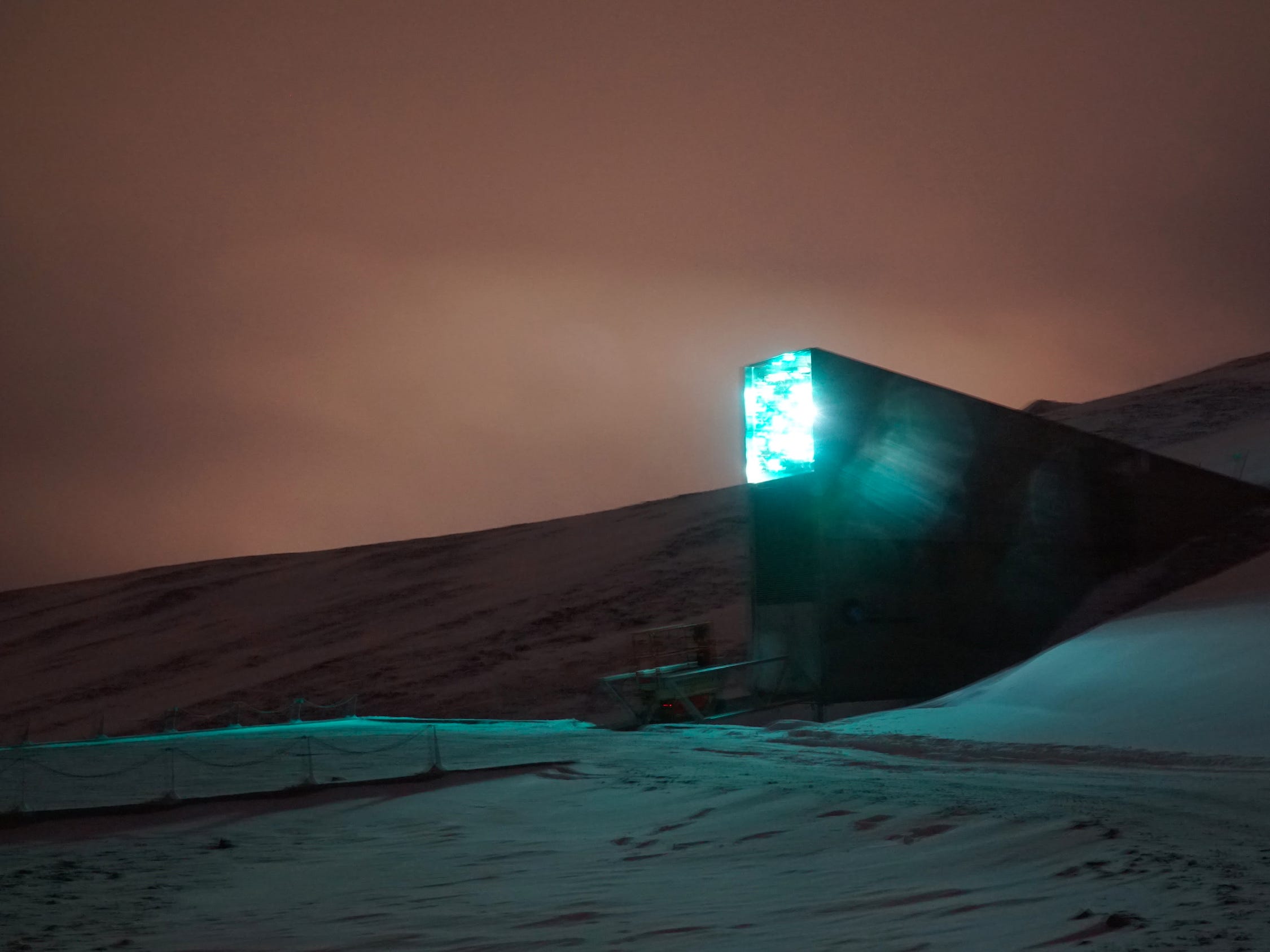
AP Photo/David Keyton
The Svalbard Global Seed Vault delves 400 feet inside a mountain near Longyearbyen and is home to over one million different seeds.
It also looks like it would make a spectacular lair for a Bond villain.
The seed vault is meant to withstand natural and man-made calamities.
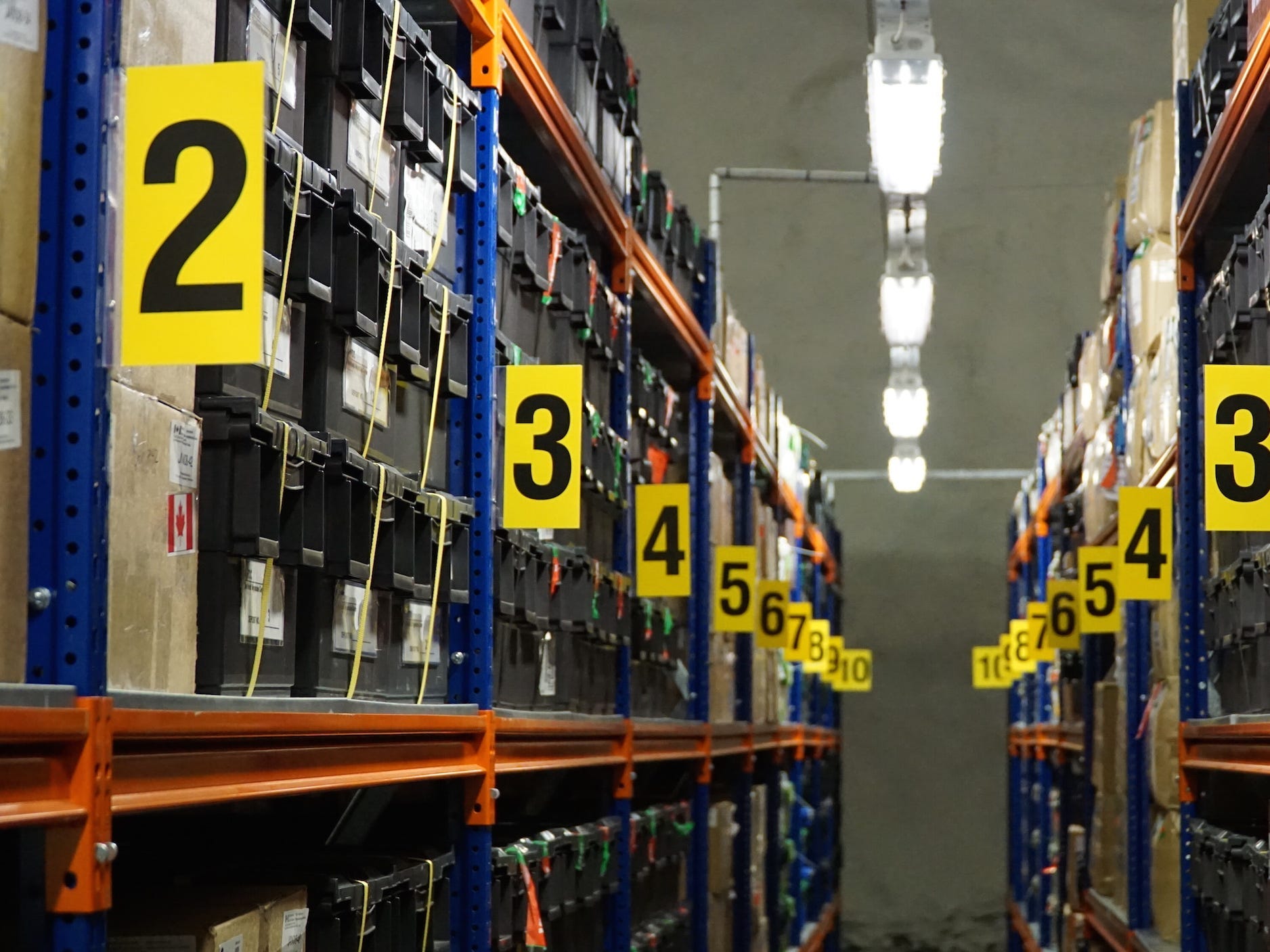
AP Photo/David Keyton
Buried in permafrost, the vault is supposed to stay frozen for at least 200 years, even if the electricity fails.
Due to rapidly rising temperatures in the Arctic, the vault already requires expensive upgrades to protect it from melting permafrost.
It can protect the seeds from climate change, natural disasters, and wars.
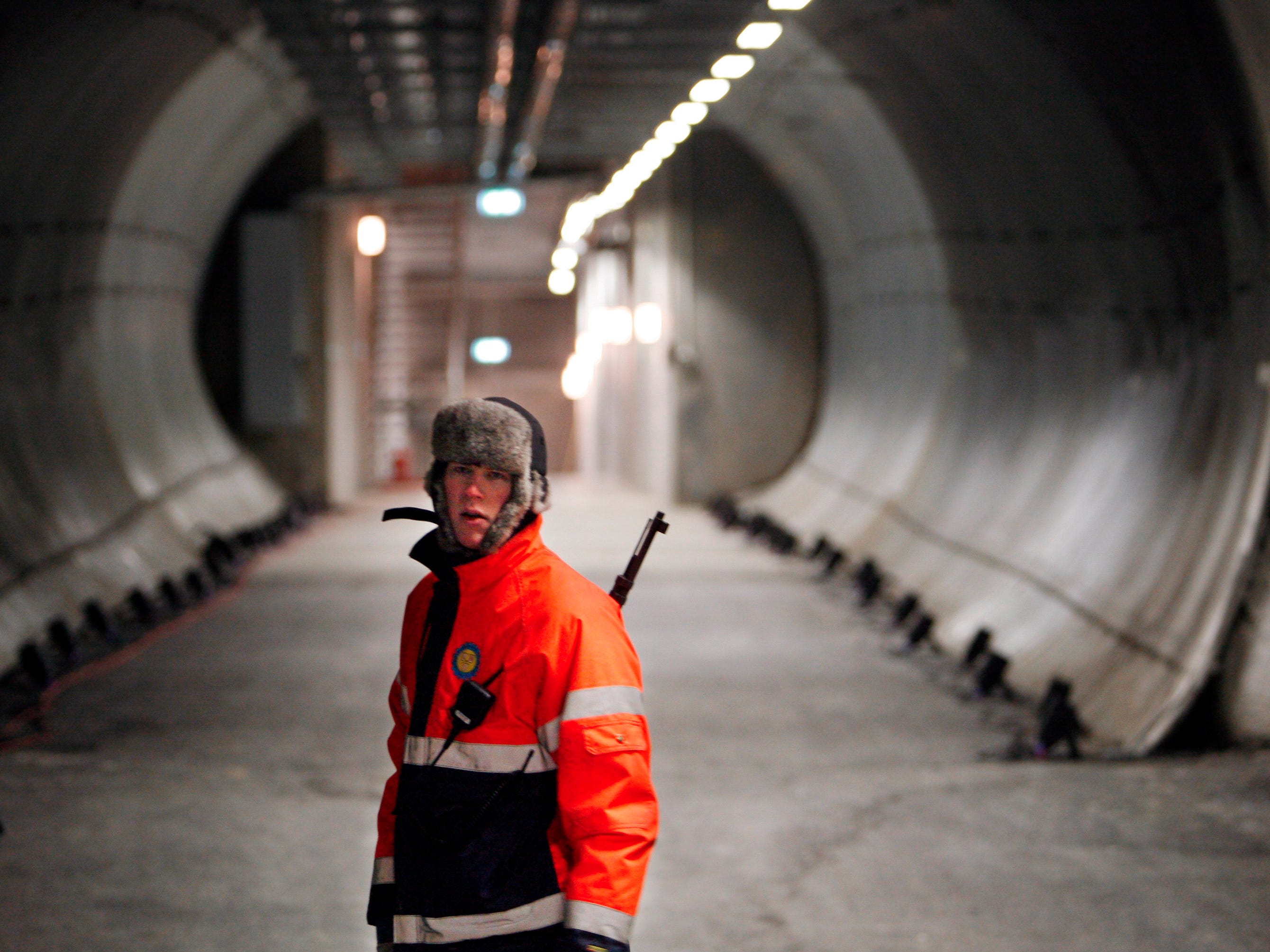
AP Photo/John McConnico
This tunnel became “like a glacier” when the meltwater froze, The Guardian reported in 2017. There are five doors with coded locks that anyone looking to get into the vault has to pass through.
Polar bears act as extra protectors of the world’s seeds.
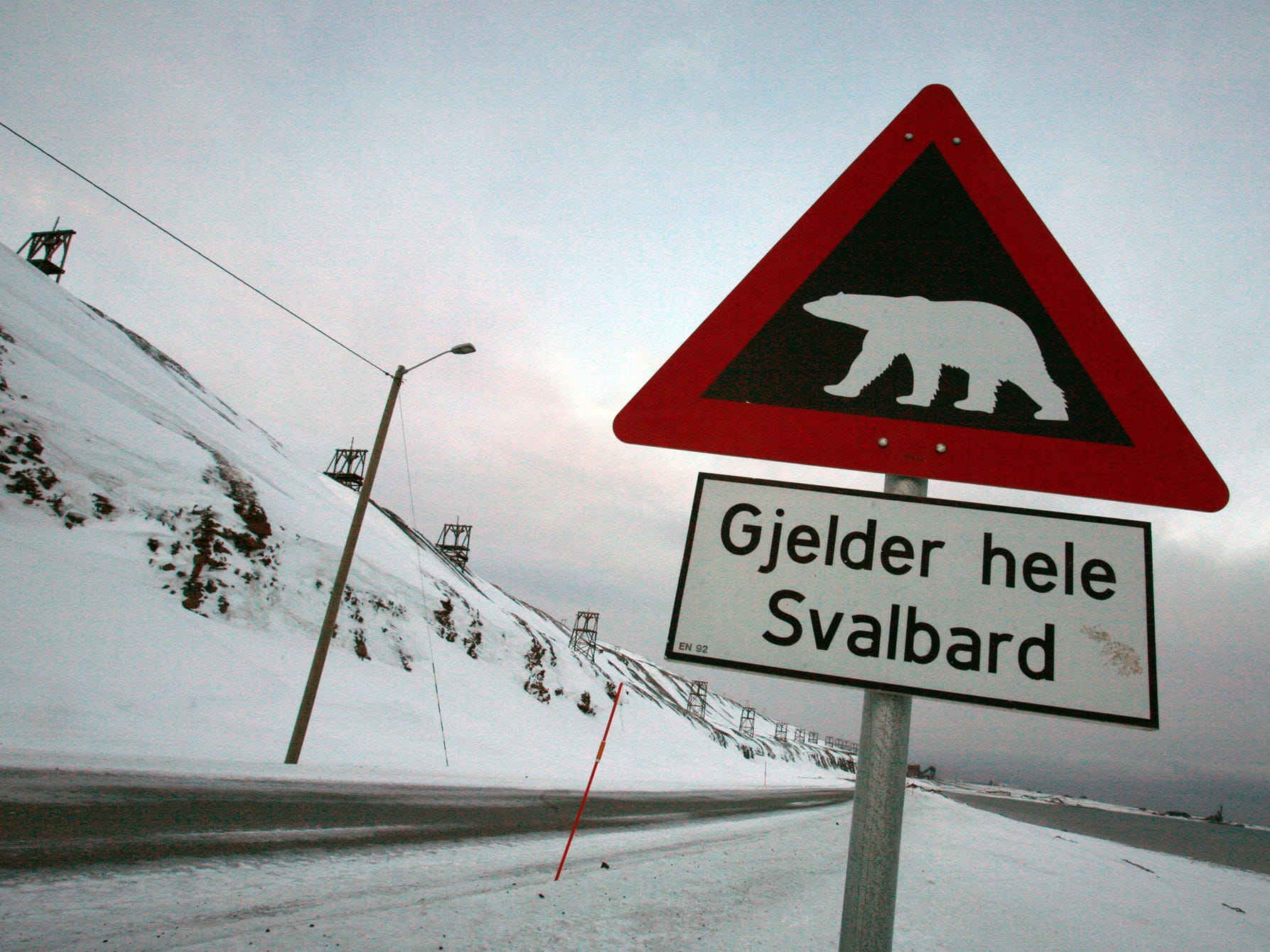
REUTERS/Bob Strong
The native polar bears provide an extra layer of security to the vault.
There are believed to be around 300 polar bears on Svalbard year-round, according to Visit Svalbard.
Local populations are wary of the roaming polar bears.
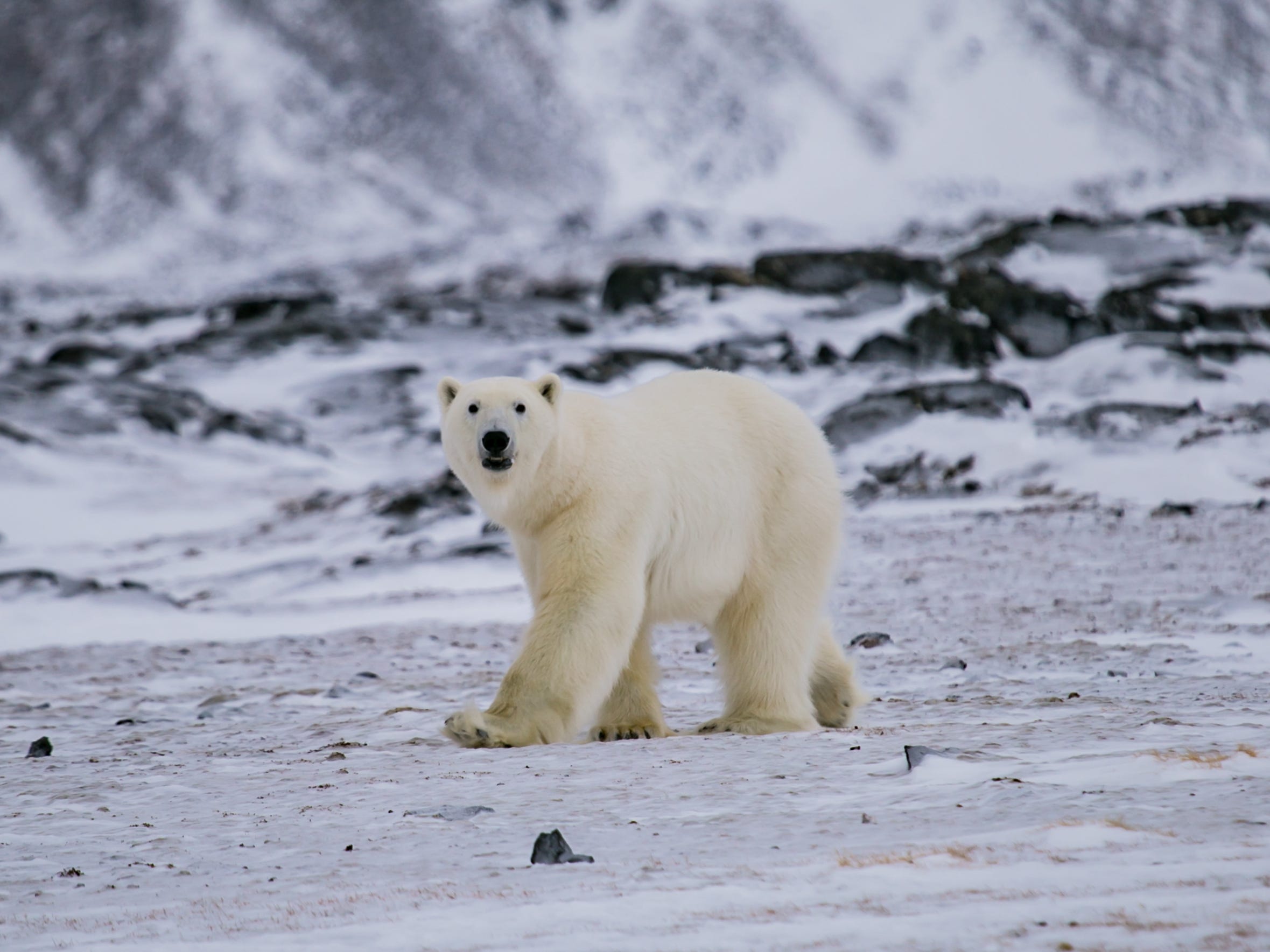
JoannaPerchaluk/Shutterstock
Wandering polar bears pose a very real threat to the population of Longyearbyen. While the bears mainly live north of Longyearbyen on the pack ice, they can occasionally venture into town in search of food.
In 2018, a polar bear was killed on Svalbard after it attacked a cruise ship guard, the BBC reported. In 2011, a 17-year-old student from the UK was killed by an emaciated polar bear that approached a group on Spitsbergen as they camped, The Guardian reported.
Although polar bear encounters are rare, residents and visitors are instructed to carry a firearm with them when traveling outside the town borders. The Governor of Svalbard actually has a six-page report detailing the best weapons to ward off polar bears.
The region is also vulnerable to natural threats.
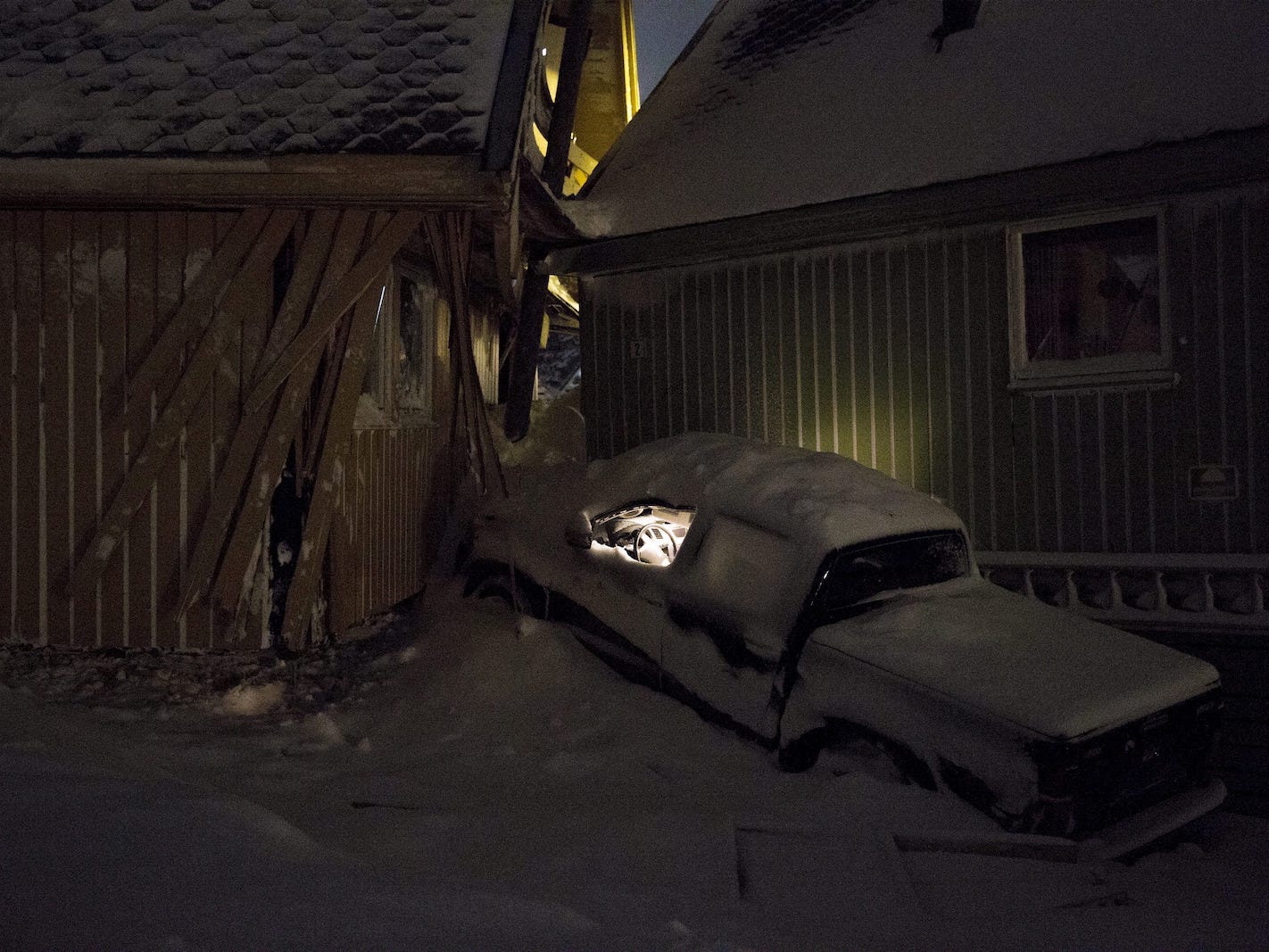
REUTERS/Tore Meek/NTB Scanpix
Residents also have natural disasters to contend with.
Two people died in an avalanche in Longyearbyen in 2015 that destroyed 11 apartment buildings. In 2017, another avalanche caused further damage to the town.
Burials are banned and births are nearly impossible, so the town has nearly no deaths or births.
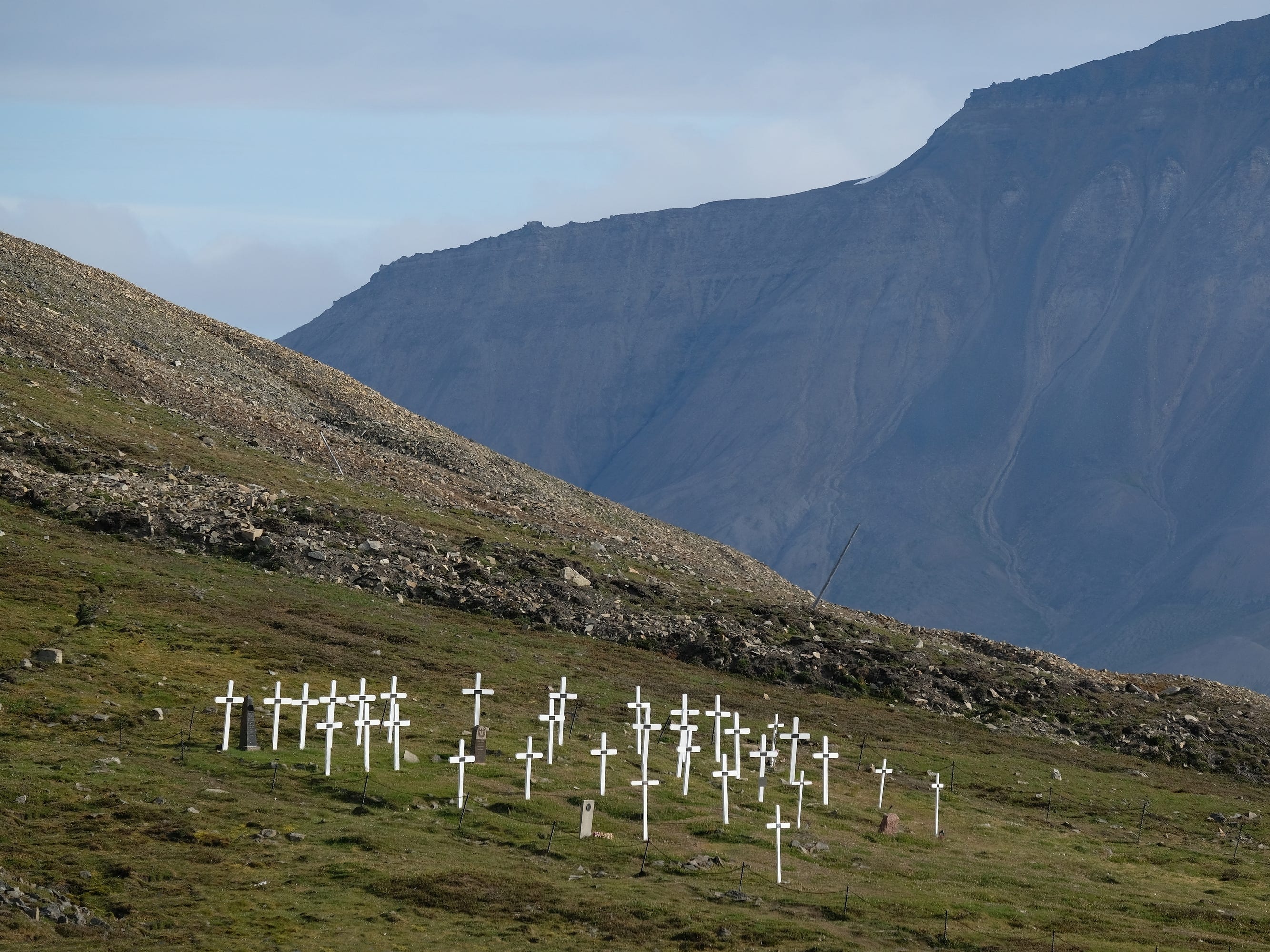
iwciagr/Shutterstock
While there is a small graveyard — the northernmost one in the world — burials were banned in the 1950s after the deceased started to resurface due to melting permafrost, the Financial Times reported.
The island also lacks the facilities to care for the seriously ill or for pregnancies. If you’re nearing the end of life or about to give birth, you have to go back to the mainland to receive appropriate care.
Despite its harsh conditions, Longyearbyen has a diverse international community.
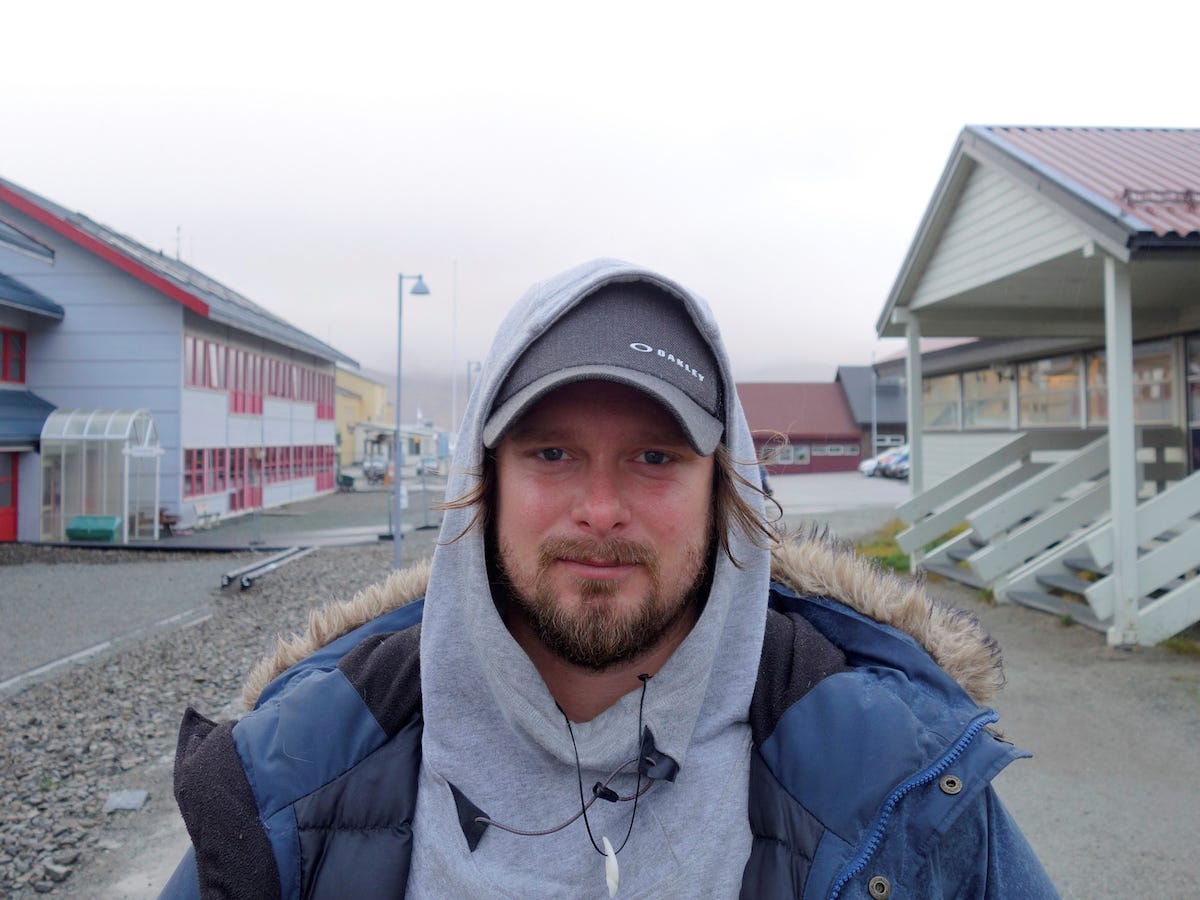
REUTERS / Gwladys Fouche
Longyearbyen brands itself as a “tiny metropolis” as its over 2,500 residents hail from almost 50 different countries.
As of 2025, a total of 113 Thai people and 127 Filipinos inhabit Longyearbyen and Ny-Ålesund, an even smaller town, combined. Filipinos only recently overtook Thai people as the second largest nationality group after Norwegians, per the Spitsbergen-Svalbard website.
The town has a Thai restaurant, a Thai supermarket, and celebrates an annual festival showcasing Thai customs.
Immigrants to Svalbard can skip a lot of the legal paperwork of migrating elsewhere.
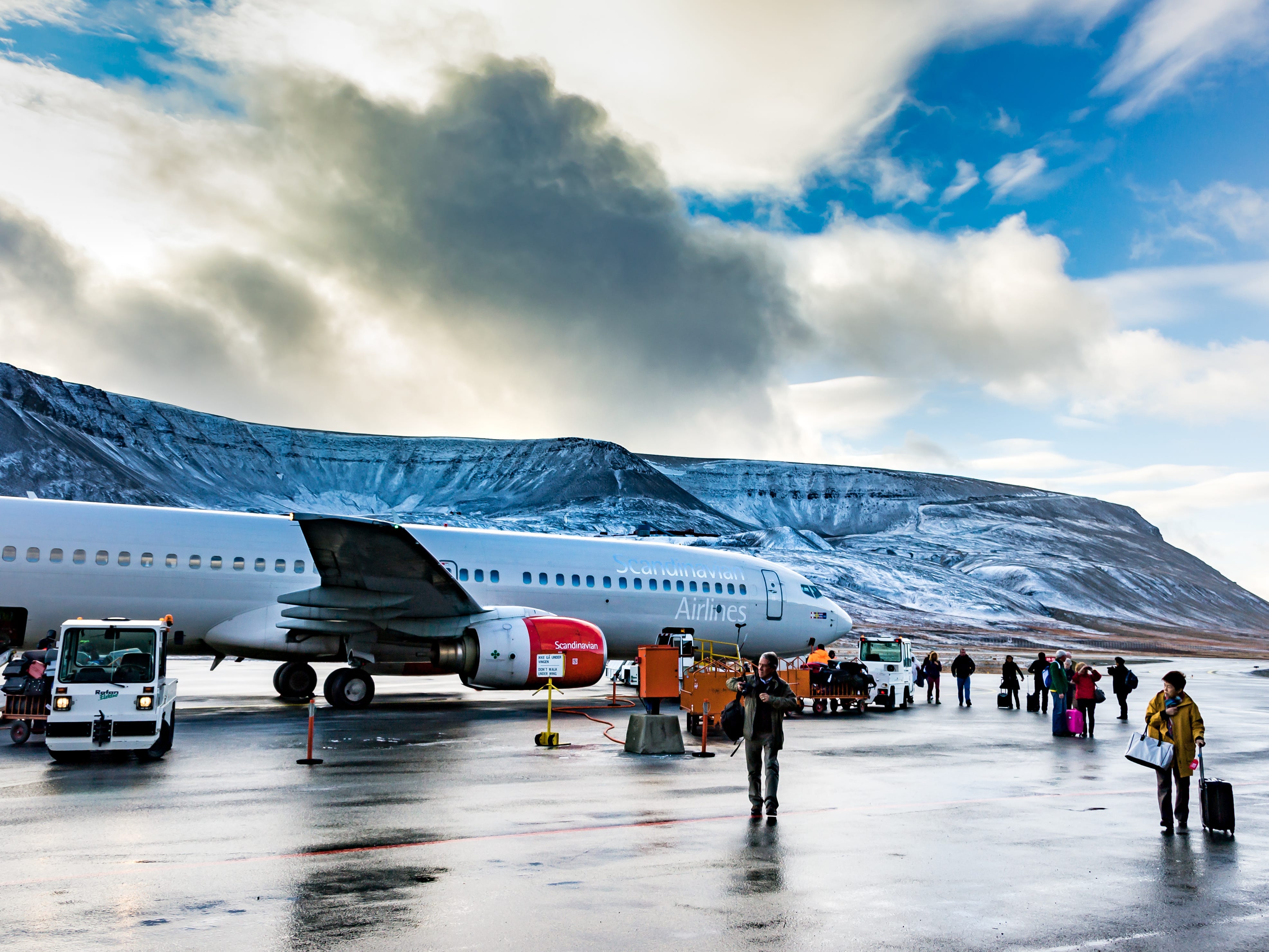
Tetyana Dotsenko/Shutterstock
Immigrants in Svalbard benefit from a unique treaty, which allows people to come to the archipelago without a visa or work permit, as long as they can financially support themselves.
Hans-Henrik Hartmann, then head of the legal unit at the Norwegian government’s immigration department, told Al-Jazeera in 2006: “If an asylum seeker is refused residence in Norway he can settle in Svalbard so long as he can get there and is able to pay for himself.”
Recent data, however, suggests more people leave Svalbard annually than move there, and a 2022 study reported that 64% of the town’s residents stay less than five years.
Although the remote location poses challenges, residents can enjoy public institutions.
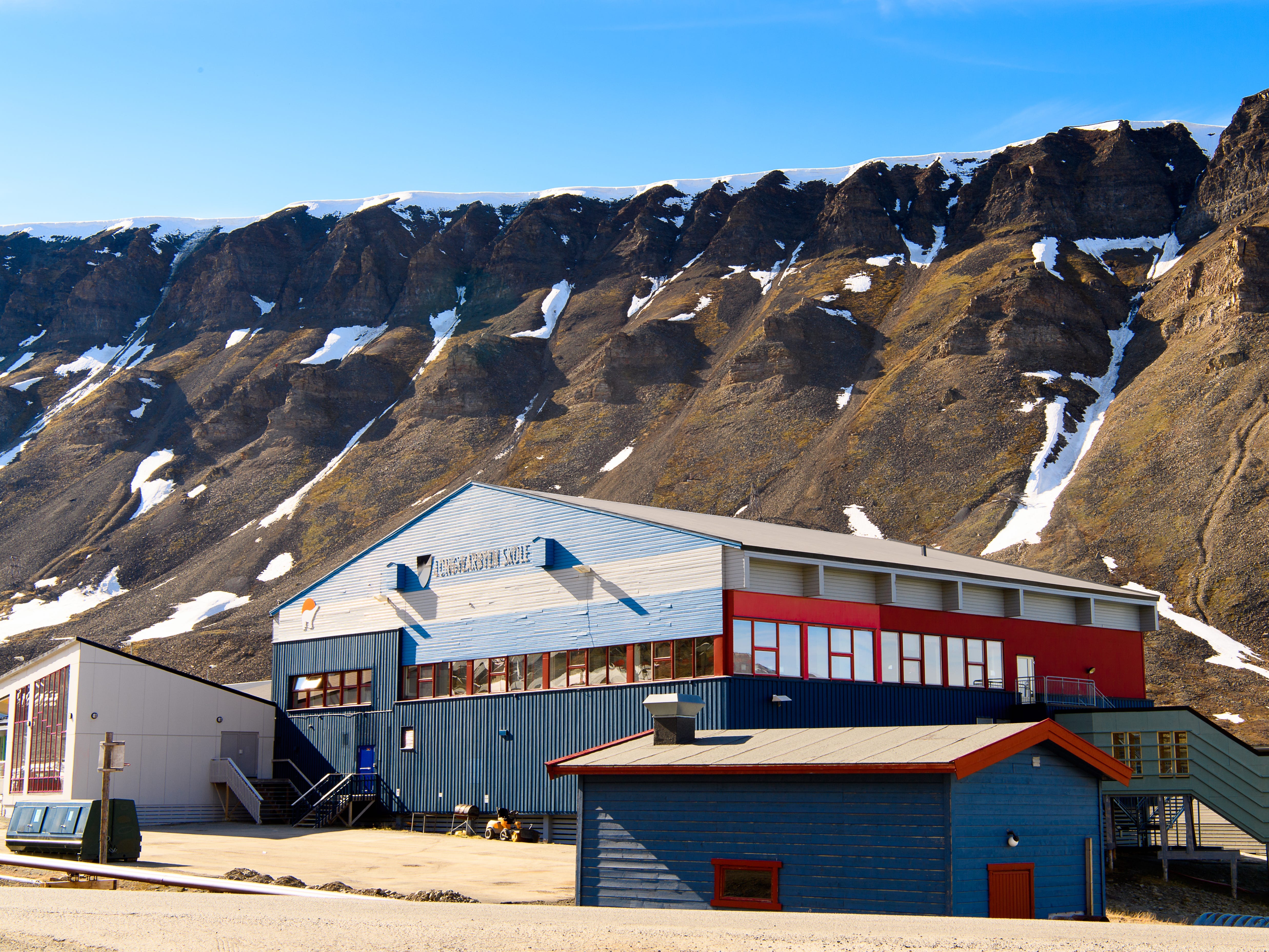
Anton_Ivanov/Shutterstock
While the cost of living in Longyearbyen is unsurprisingly high due to its remote location, residents can benefit from the town’s institutions like the school, which reportedly serves around 270 pupils aged between 6 and 18.
It is — also unsurprisingly — the northernmost school in the world.
Students in the region don’t get an average city education.
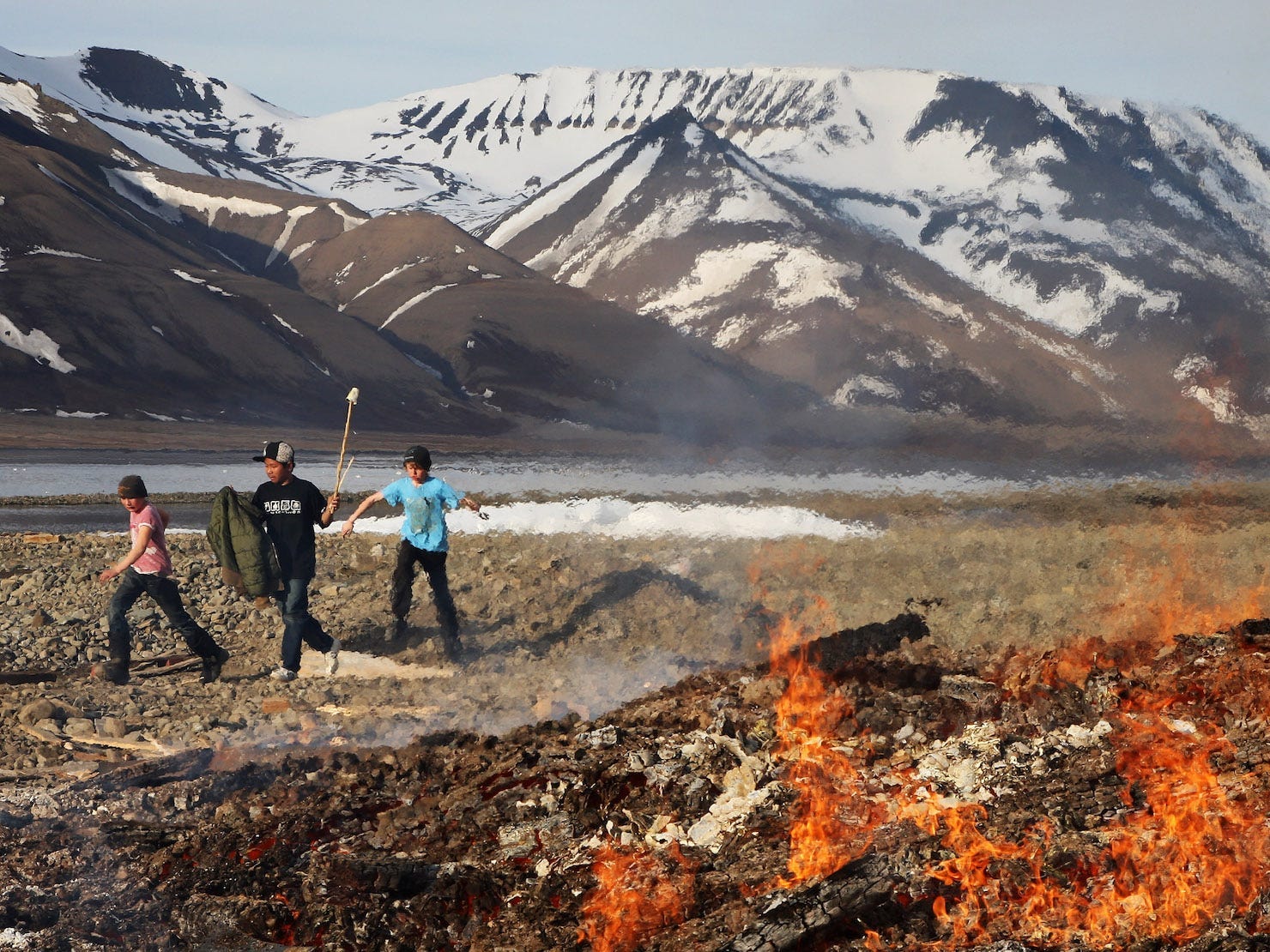
Chris Jackson / Getty Images
Students at the school won’t just learn maths and literature.
“They will learn how to behave in nature, how to behave with polar bears, how to survive in winter, how to find a safe place to camp or how to deal with avalanches,” a teacher told The Guardian in 2007.
The town even has a public free university.
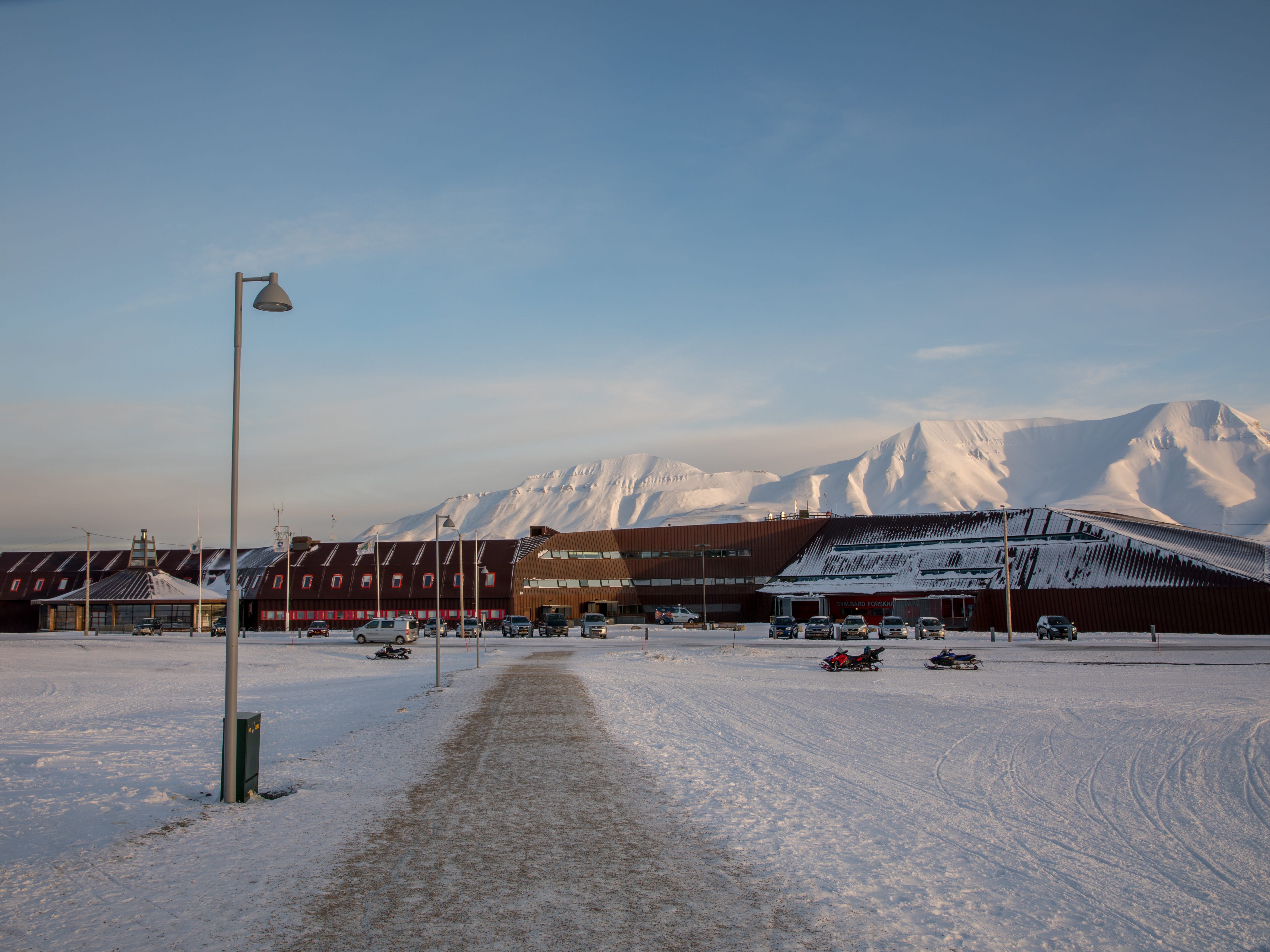
Lillian Tveit/Shutterstock
The University Centre in Svalbard (UNIS) is, you guessed it, the northernmost tertiary school in the world.
Many of the 700 students that take courses there each year don’t have to pay any tuition fees — they only pay an administration “semester fee” of 710 Norwegian Krone, which is about $70.
They are offered courses in Arctic biology, Arctic geology, Arctic geophysics and Arctic technology.
All students must learn how to use a firearm, per Visit Svalbard.
There’s plenty of activities to enjoy in the world’s northernmost town.
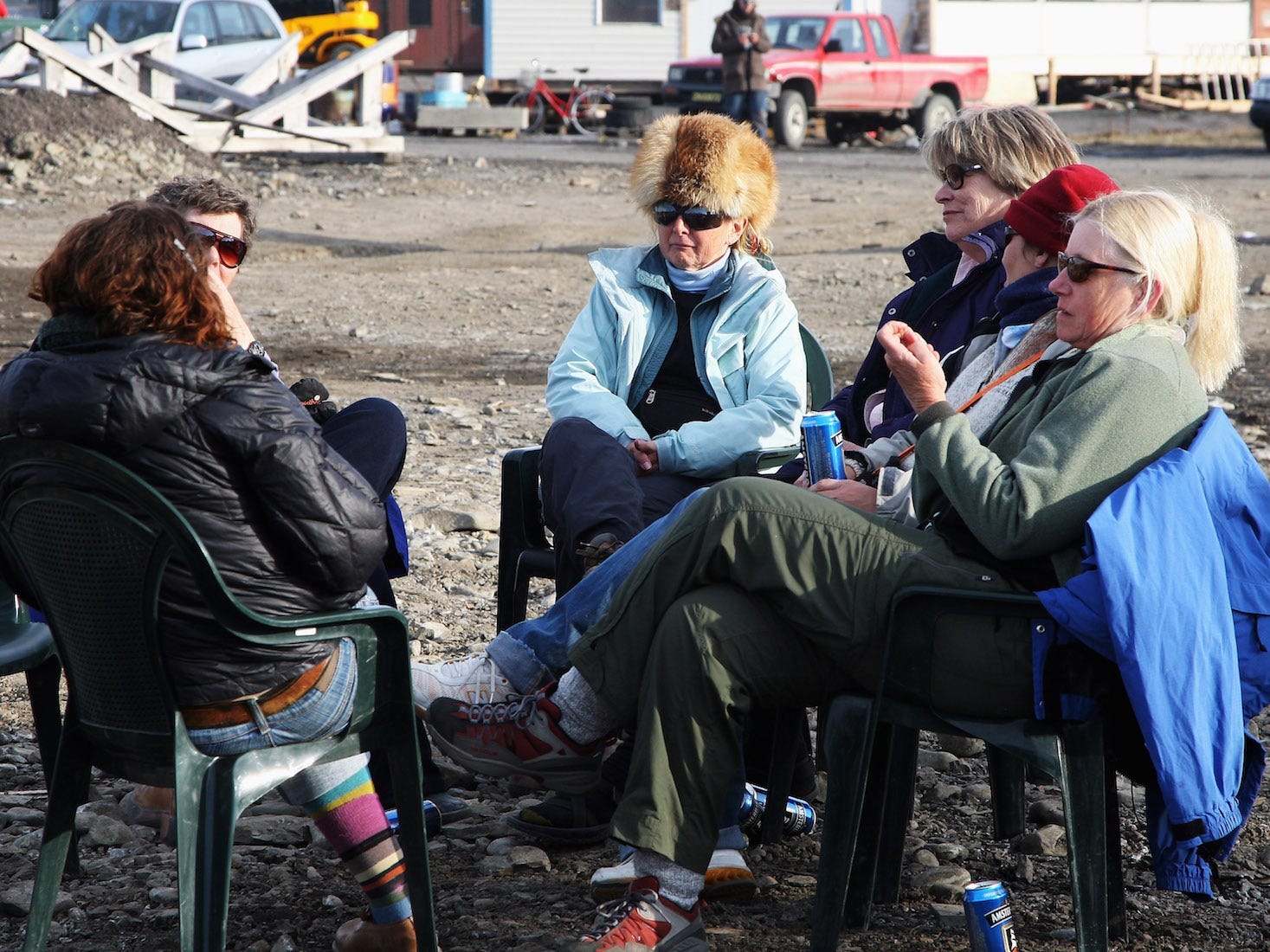
Chris Jackson / Getty Images
Aside from the Thai restaurant, residents of Longyearbyen can also pass time in the art gallery, cinema, or museum. There’s even a few pubs and a nightclub — also the northernmost in the world.
Besides, they can also explore their extreme nature surroundings.
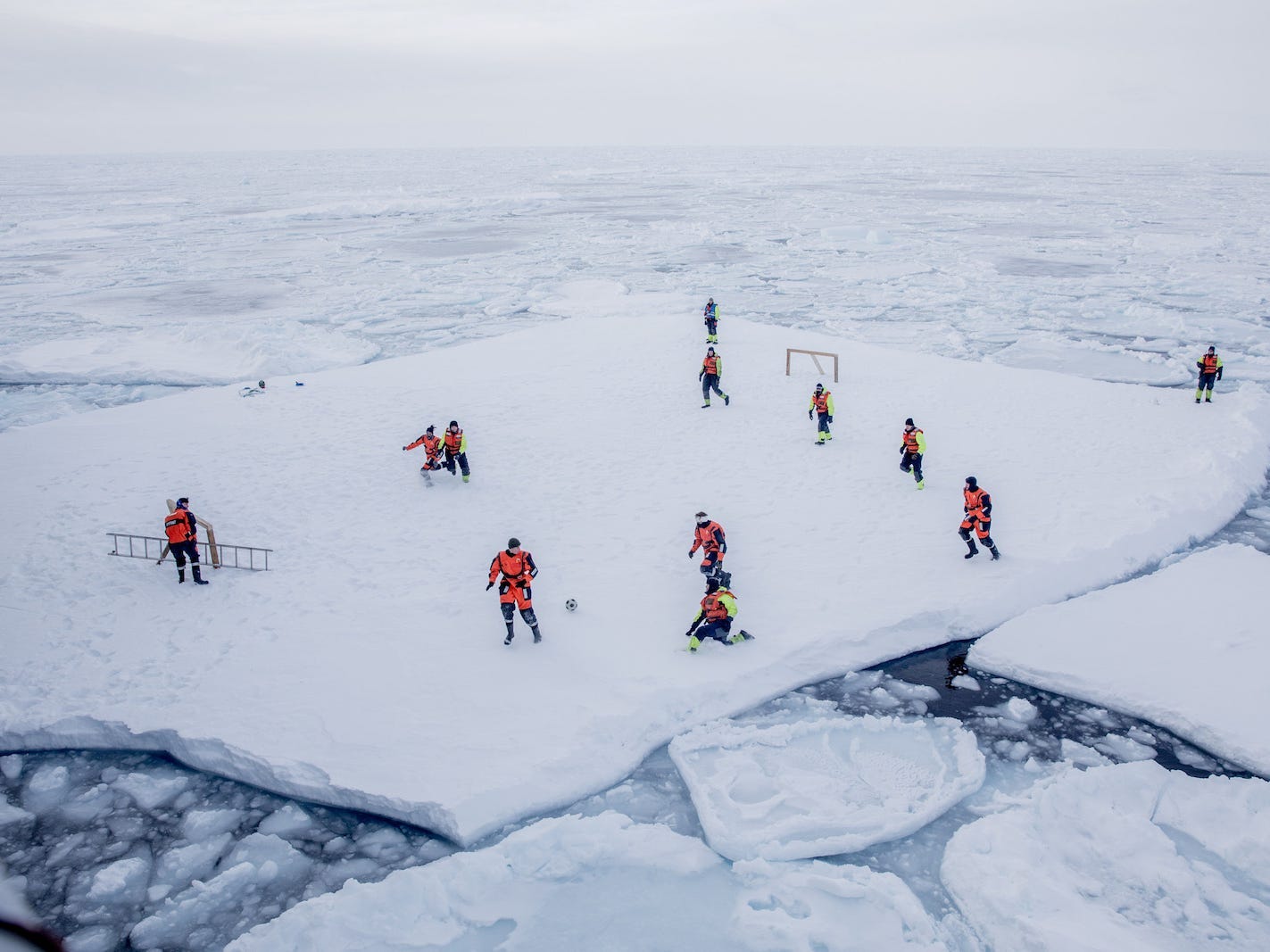
Marius Vagenes Villanger / Kystvakten / Sjoforsvaret / NTB Scanpix via REUTERS
You can have a kick about on the pack ice — just make sure to bring armed guards in case of polar bears.
Following almost four months of darkness each year, residents celebrate the return of the sun with a Sun Festival Week.
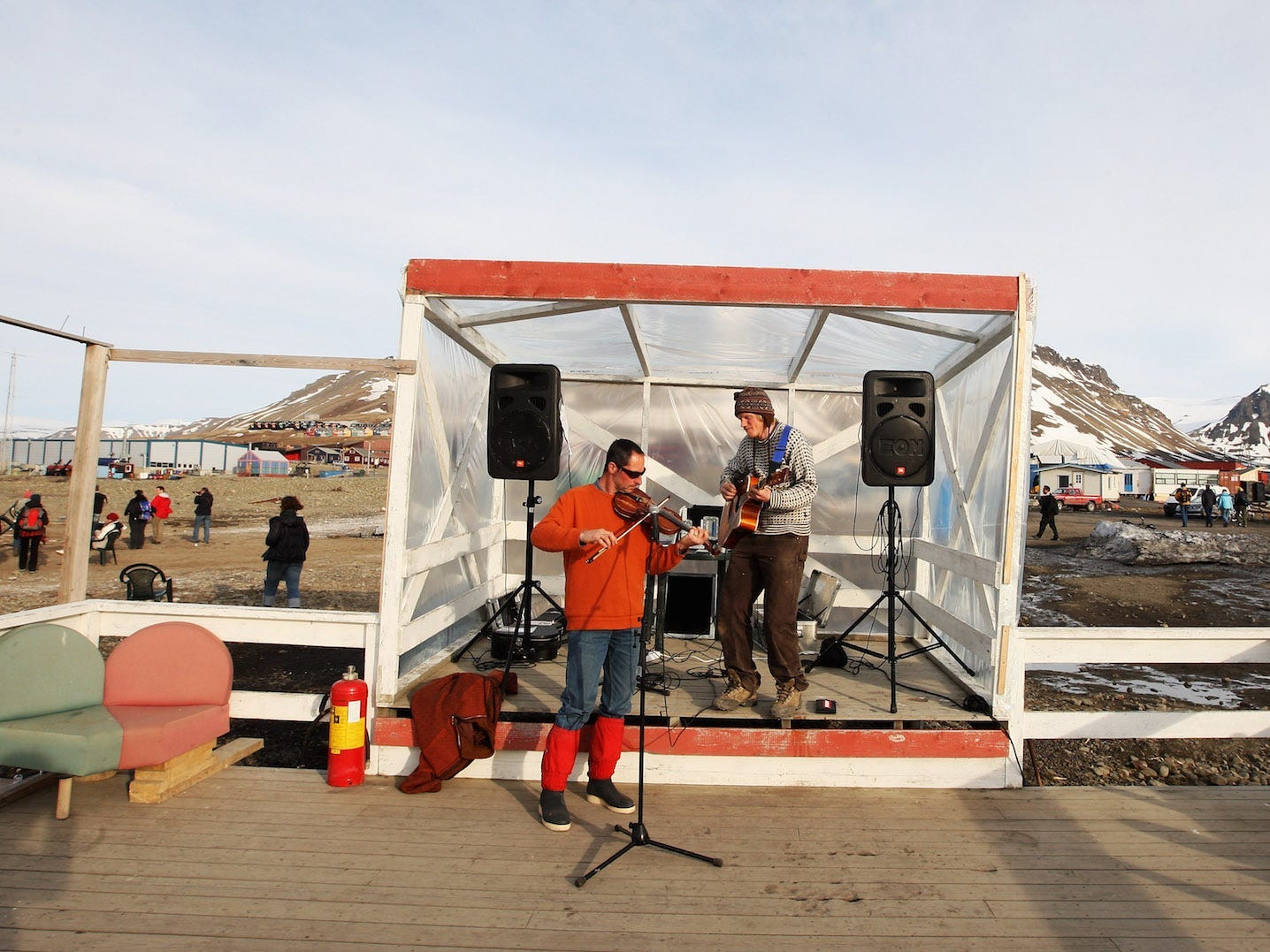
Chris Jackson / Getty Images
Due to Longyearbyen’s extreme northern location, it experiences “polar night” each year, when the sun doesn’t rise above the horizon from early November through January.
Every year, Longyearbyen celebrates the end of the dark season with Sun Festival Week, per Visit Svalbard.
The town gathers on the old hospital steps to celebrate the sun’s return. The saying goes that “the sun is declared back in Longyearbyen when its rays reach the steps.”
Although living in months-long darkness isn’t for everyone, it also comes with perks.
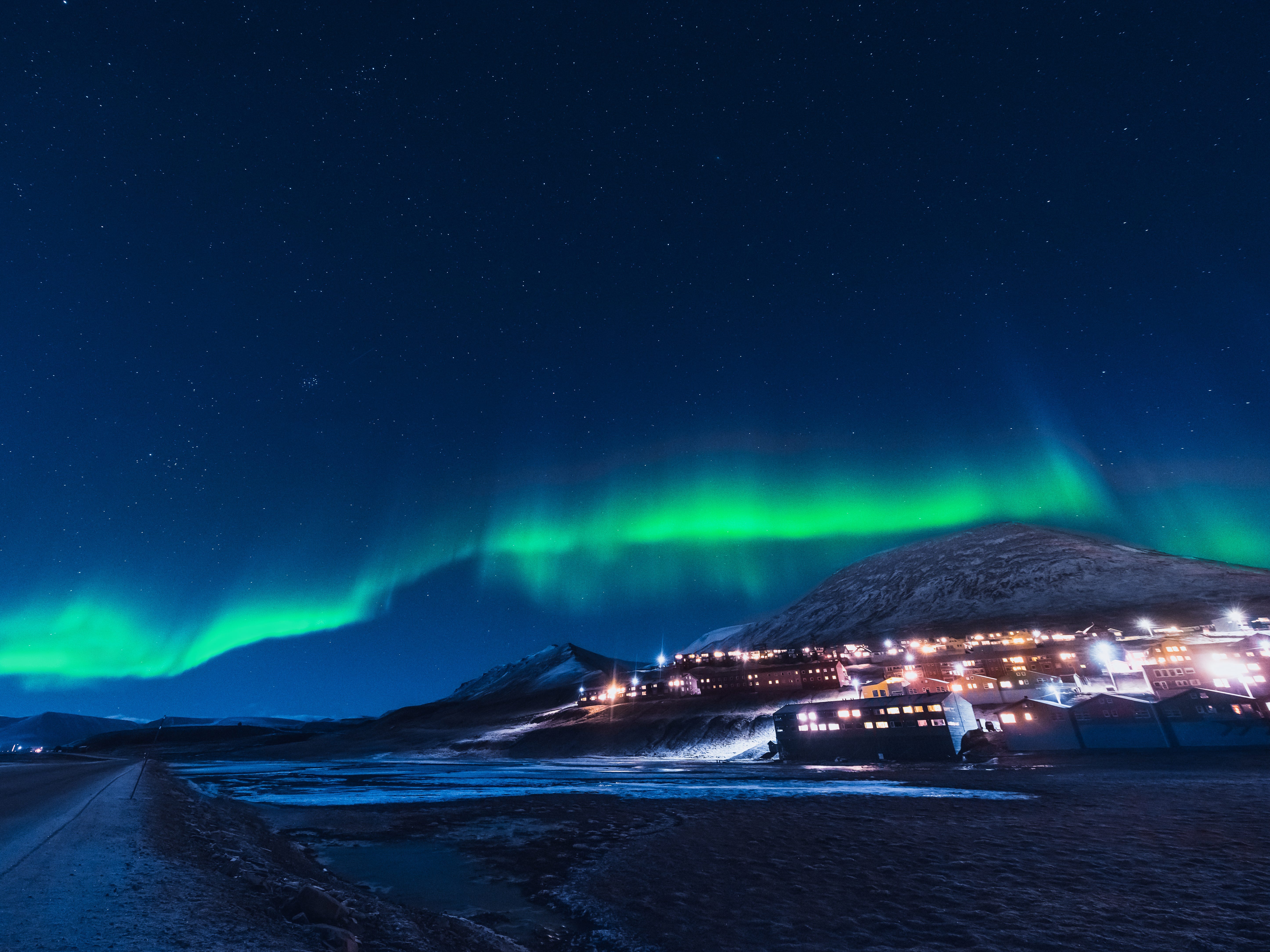
ginger_polina_bublik/Shutterstock
Longyearbyen is one of the best places in the world to witness the Northern Lights, also known as the aurora borealis.
The town is a great location for watching lunar events.
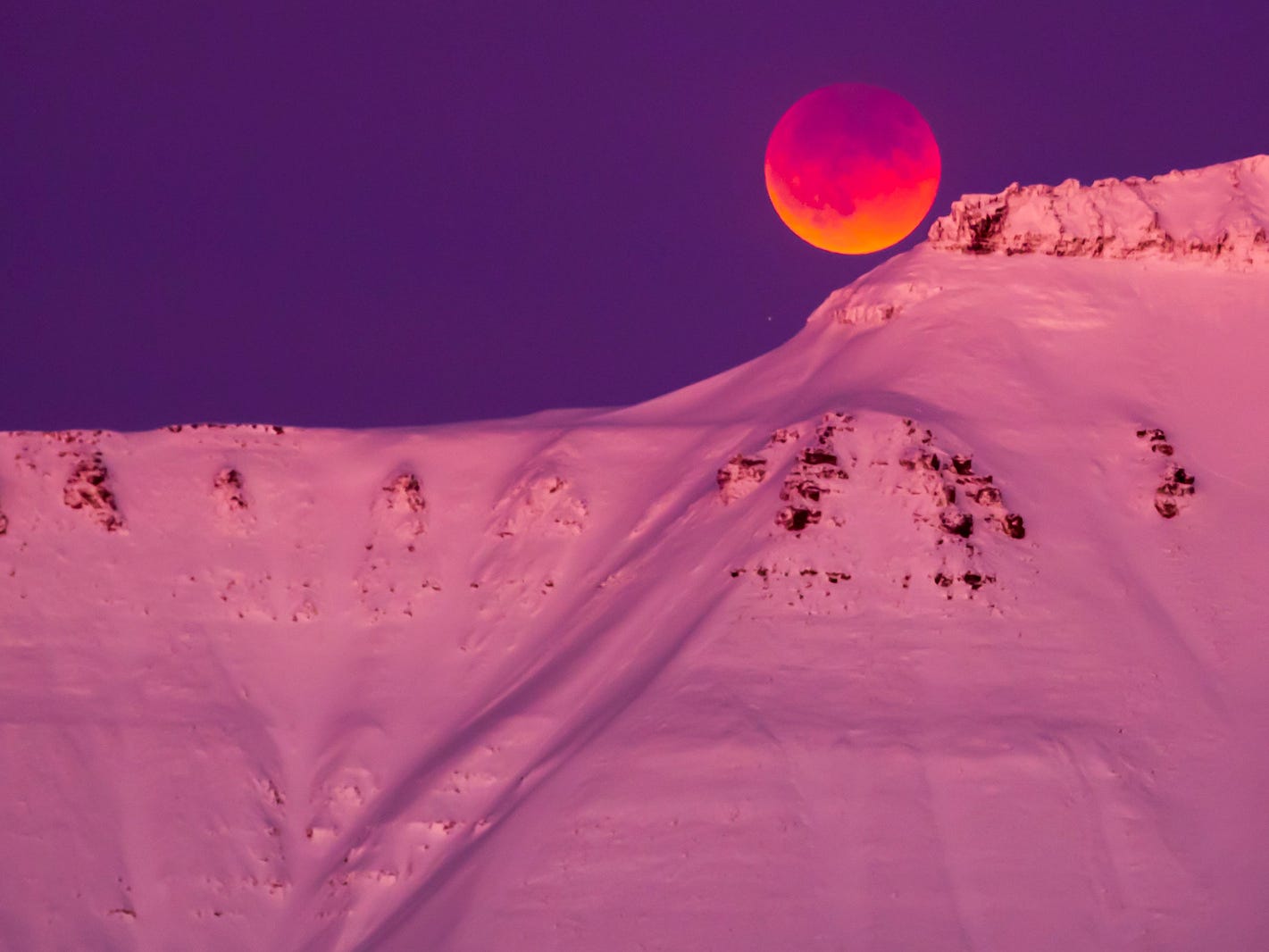
NTB Scanpix / Heiko Junge / via REUTERS
It was also one of the best places in the world to take in the “super blue blood moon” that occurred in 2018 (pictured).
One of the most reliable methods of transportation is the snowmobile.
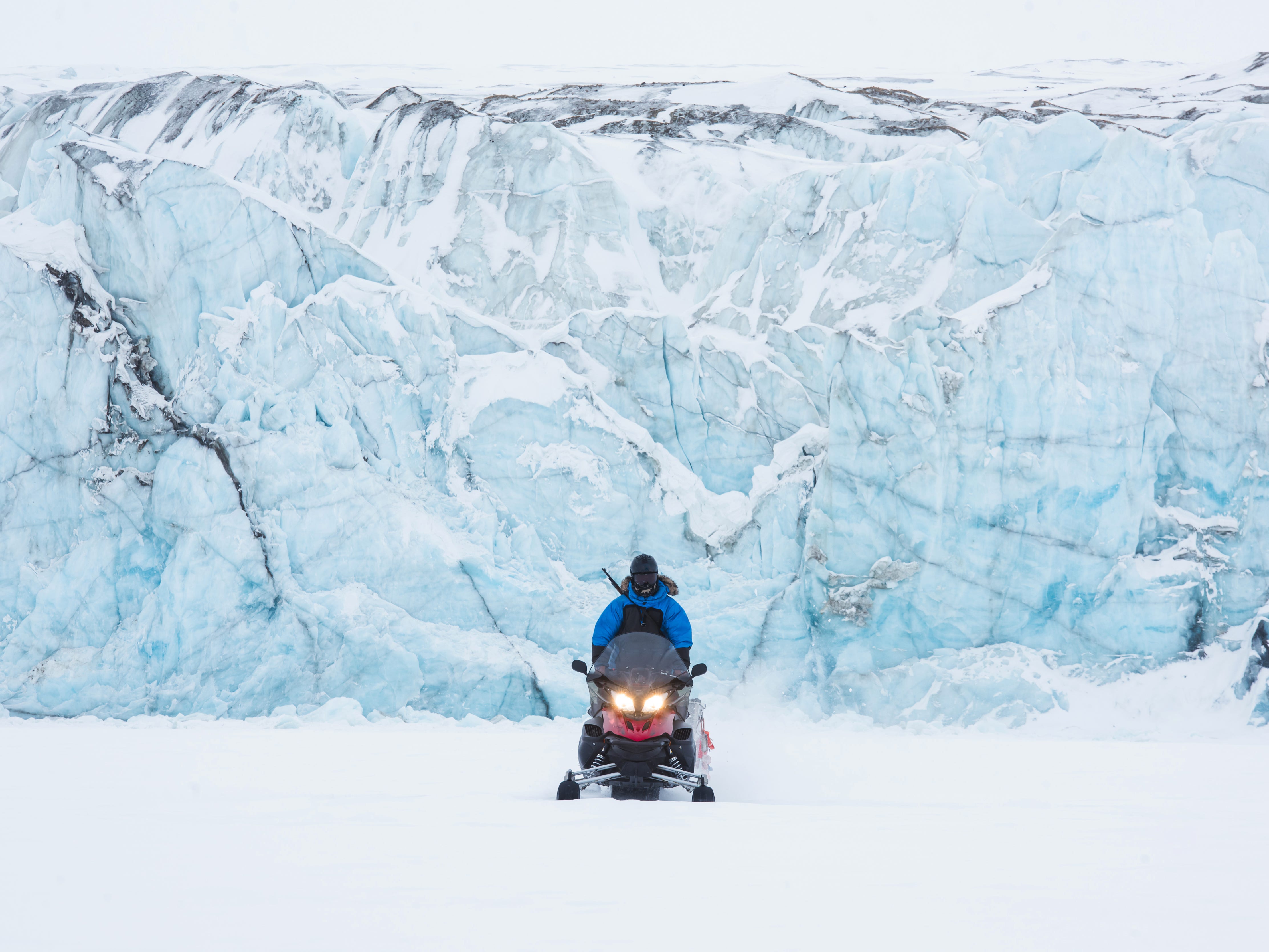
ginger_polina_bublik/Shutterstock
Many people in Longyearbyen get around by snowmobile. In Svalbard, there are more snowmobiles than there are people to use them (3,000 as of 2024), per The Norwegian Polar Institute.
Others rely on four-legged neighbors for transportation.
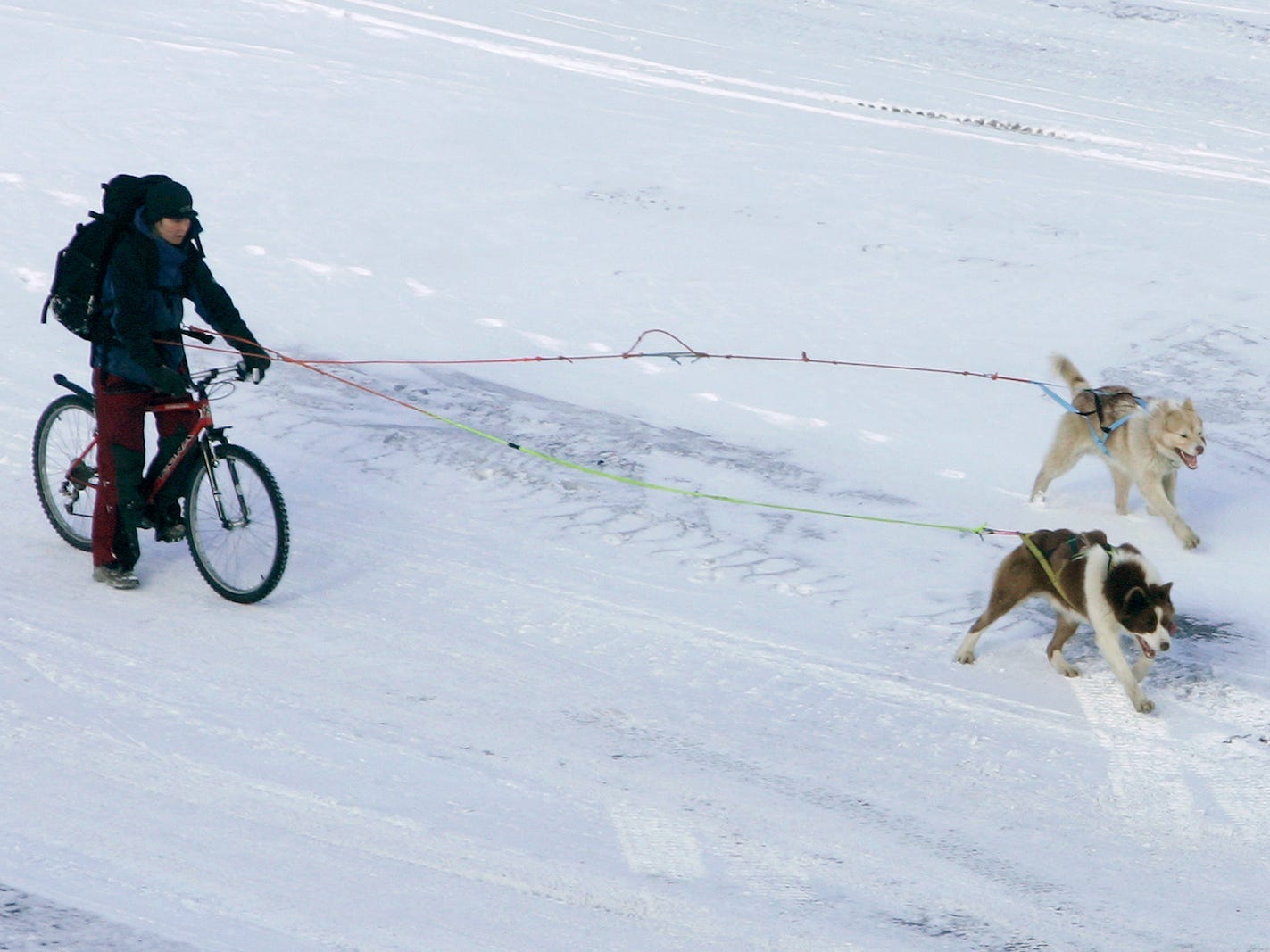
REUTERS / Francois Lenoir
Some prefer more traditional methods of travel, though. The archipelago is home to more than 1,000 polar dogs, which are basically elite athletes — sometimes consecutively running over 100 kilometers, or 62 miles, per day for weeks at a time, per Visit Svalbard.
Grocery shopping might look a bit different, too.
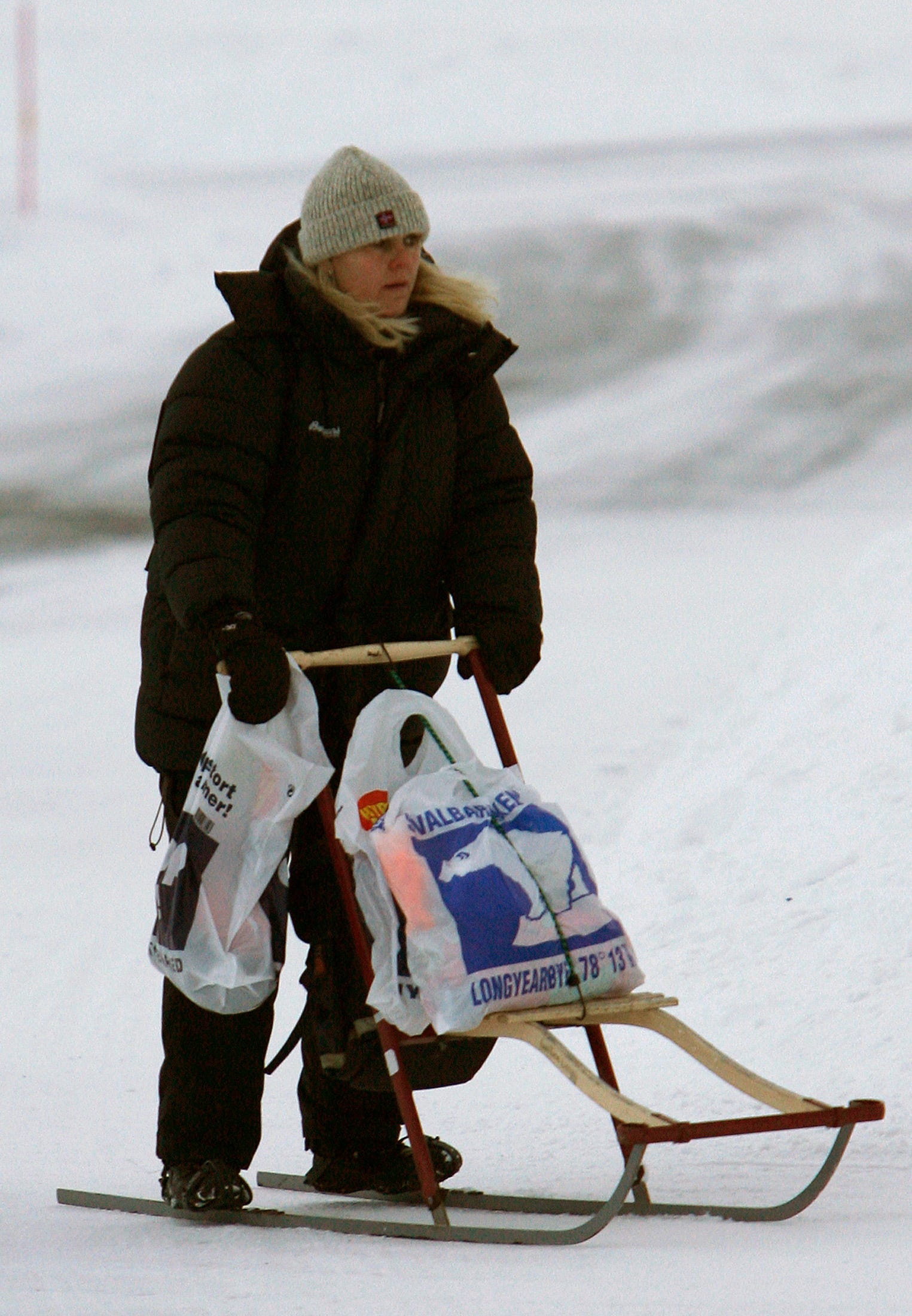
REUTERS / Bob Strong
Shopping at the town’s one grocery store might be a bit of a hassle, but residents know how to get around it.
The town is also home to the world’s northernmost hotel.
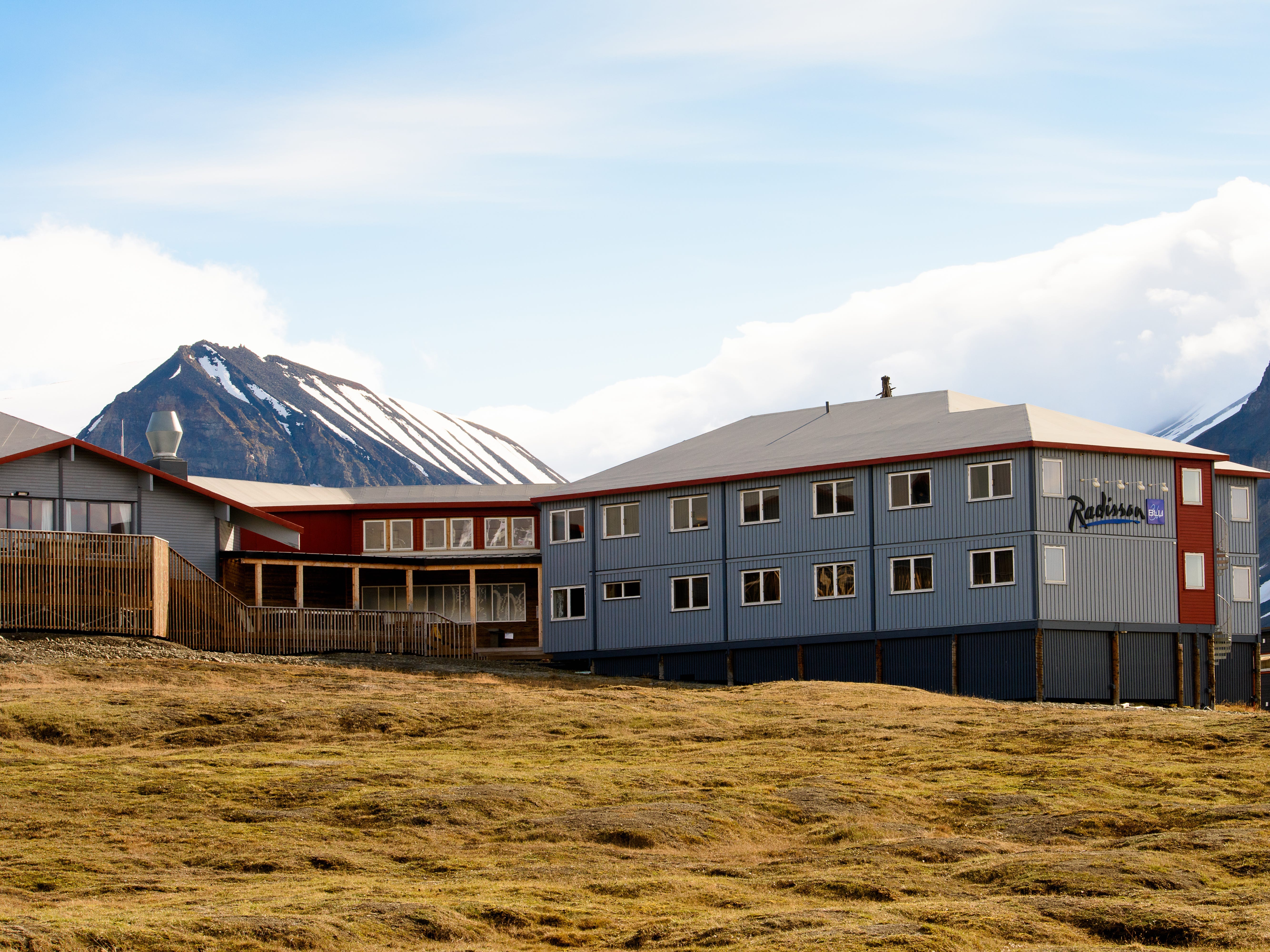
Anton_Ivanov/Shutterstock
Longyearbyen visitors can stay in the Radisson Blu Polar Hotel (the northernmost hotel in the world, as recognized by the Guinness World Records), where rooms start at $205 per night, per the hotel’s website.
Read the original article on Business Insider
The post What it’s like to live in the world’s northernmost town, where it’s dark for 4 months a year and polar bears roam free appeared first on Business Insider.




